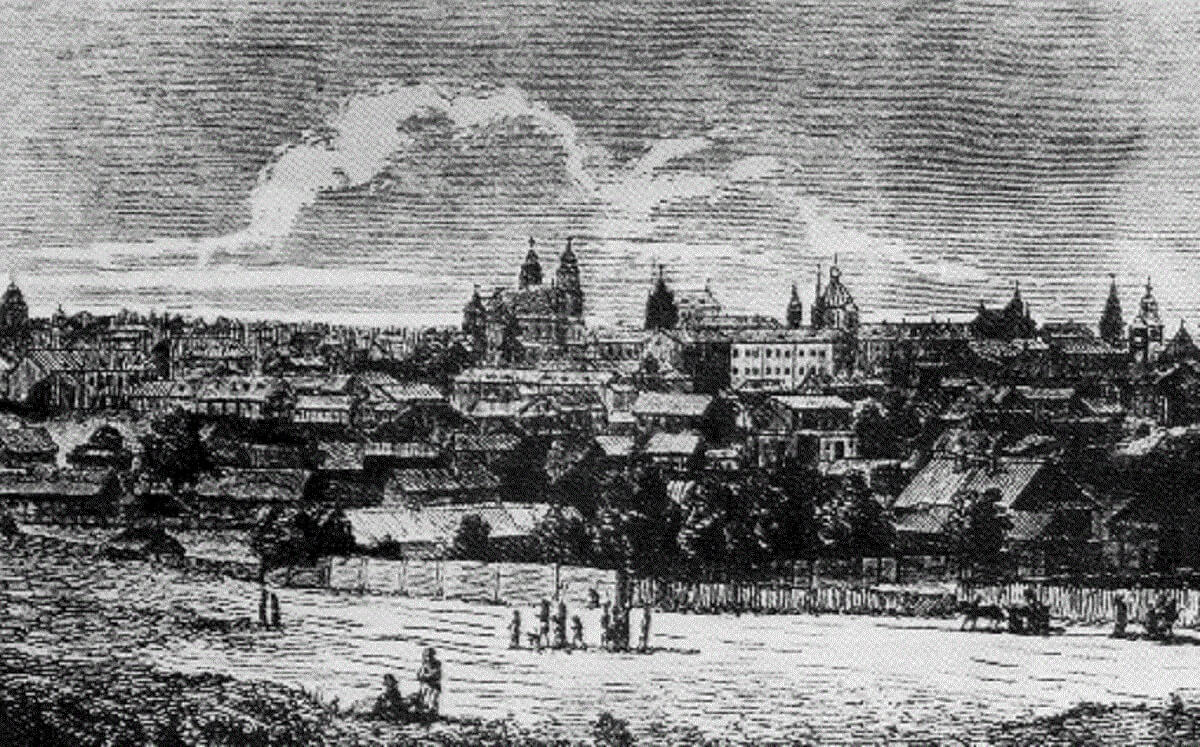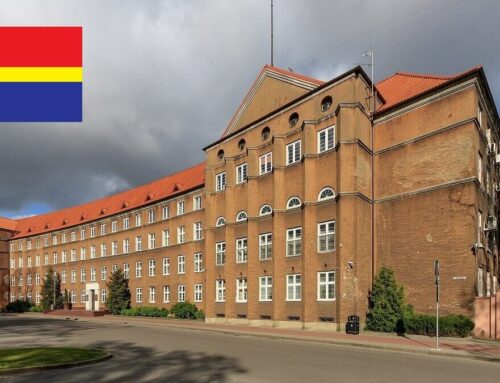One should start by recognizing, that the exact date of the foundation of Minsk is unknown. The most ancient settlements on the territory of the modern city existed in the IX century, when the Svislach River valley was inhabited by the ancient ethno-political communities of Krywičy and Drygavičy. Around 980, this territory became part of the Principality of Polatsk. But the first written mention of Minsk dates back to 1067.
It is important to mention, that at that time the city had a different name, that was «Mensk» or «Menesk». Such names were actively used mainly by the locals and in official documents for many centuries. In the correspondence of dukes and annalistic sources «Mensk» and «Menesk» ceased to be used only in the XVIII century. The actual form «Minsk» was first mentioned in documents just in the XVI century and was caused by the process of «polonization» (rapprochement with Poland).
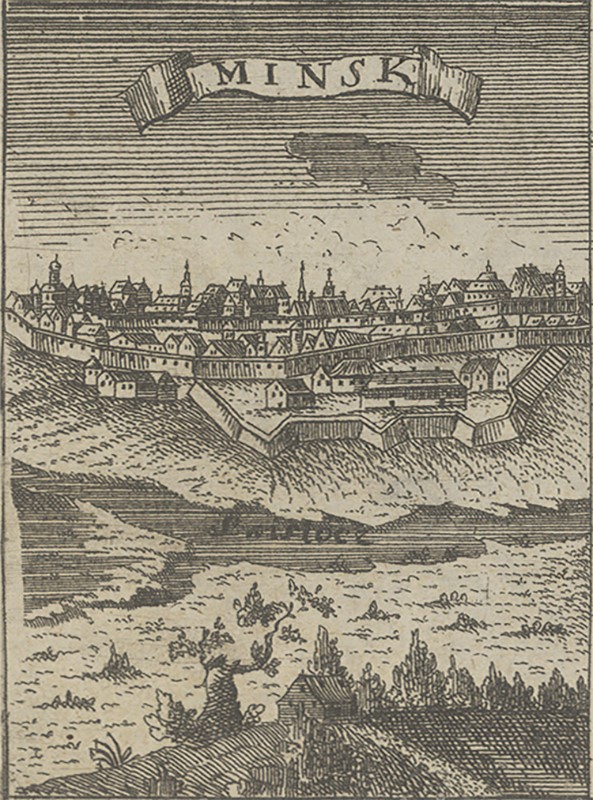
Minsk, engraving of 1772
At the end of the XI – beginning of the XII centuries, Minsk became the capital of the appanage principality, which existed until the beginning of the XIV century. Thus, a thousand years ago existed almost an independent state on the model of Western European kingdoms, the Minsk Principality. However, it was formally under the authority of the Grand Duke of Lithuania: such unions were made for joint protection and more effective security. At the same time, the appanage dukes had their own administrative apparatus, currency, army, judicial institutions, etc.
During the XIII – the end of the XV centuries, the Principality of Minsk was part of the Grand Duchy of Lithuania. During the XV-XVIII centuries, Minsk was the center of the administrative-territorial unit of the Minsk district of the Vilna Voivodeship.

The Grunwald International Festival of Medieval Culture and Music, 2016
It is important to note that in 1499 Minsk became the owner of Magdeburg rights, based on the principles of local self-government of cities prompted the development of the city. During this period, the city was one of the 14 most developed cities of the principality.
In the middle of the XVI century Minsk became the capital of the Minsk Voivodeship. So, now the city was the center of the largest administrative-territorial unit of the Grand Duchy of Lithuania.
Minsk remained one of the largest cities of the Grand Duchy of Lithuania, which since 1569, united with the Kingdom of Poland, became part of the federal state that was called Rzeczpospolita, or the Polish-Lithuanian Commonwealth.
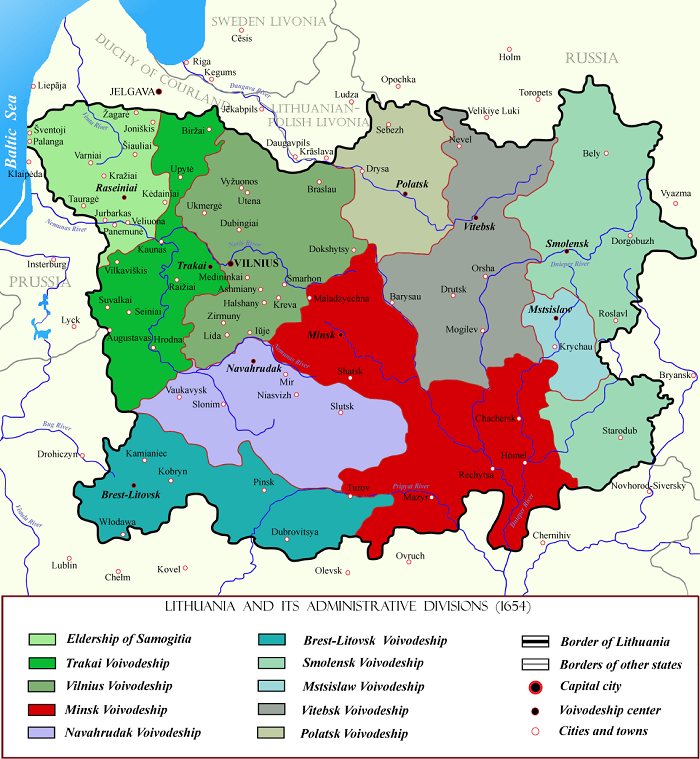
It is worth emphasizing that during the XVI-XVII centuries the wars of the Grand Duchy of Lithuania (later Rzeczpospolita) with the Moscow Duchy were actively waged, as a result of which in 1655-1660 Minsk was under the occupation of Russian troops. During the XVIII century, the city was actively developing. In 1713, the first educational institution appeared in the city, which provided education at the level of a humanitarian university (Jesuit Collegium).
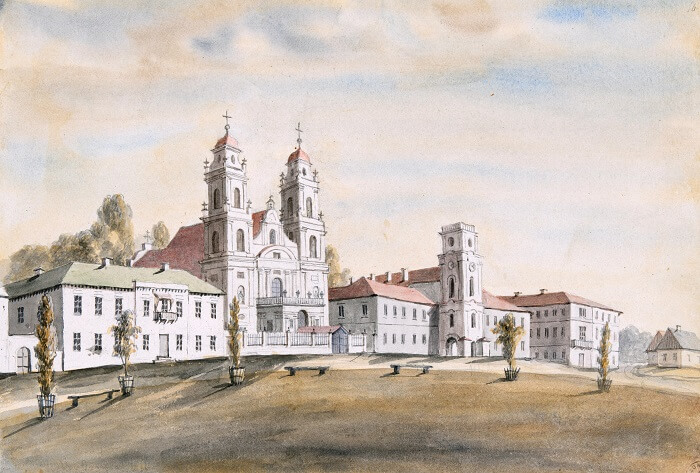
Mensk, Wysoki Rynak, N. Orda, 1864-1876
As a result of the second partition of the Polish-Lithuanian Commonwealth, Minsk became part of the Russian Empire, where it became the administrative center of the Minsk province. In 1795, the Magdeburg Law was abolished by the Russian authorities, and the official symbols of the city were changed. In 1857, the building of the Minsk City Hall, which reminded of the hours of self-government, was destroyed.
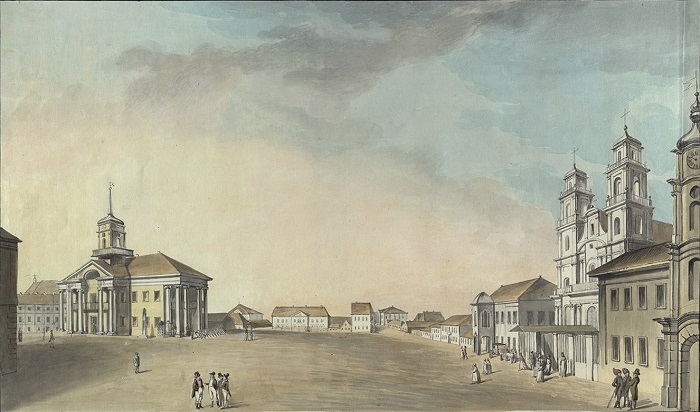
Mensk, Wysoki Rynak, J. Pieška, 1800
Despite the martial law imposed in the city during the national liberation uprising of 1863-1864, the townspeople took an active part in the speeches. In 1866, most of the streets of the city were renamed by the Russian authorities. In the second half of the XIX century, many churches were also destroyed, Orthodox churches were rebuilt. Such steps were taken in order to «fight the past». During another uprising in 1905 in the Russian Empire, some demonstrations and strikes were organized in Minsk.
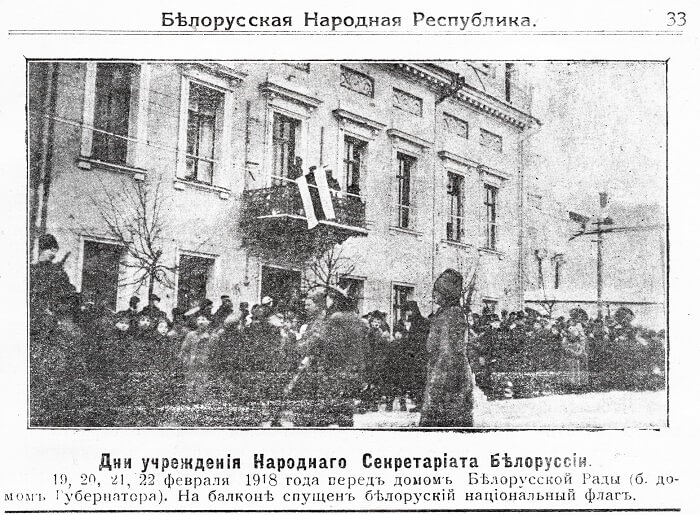
Scythemen of January Uprising, 1863
As a result of the February revolution of 1917, the townspeople created a local council of deputies. Congresses of national organizations and parties were actively held. In the autumn of 1917, the Belarusian National Committee was established in the city, which became the ruling body of the national movement.
On December 18, 1917, the First All-Belarusian Congress was convened in Minsk, which gathered more than 1,850 Belarusian public and political figures representing 7 provinces of the former Russian Empire. During the constituent assembly, the right of the Belarusian people to independence and self-determination, the adoption of a democratic form of government was proclaimed. The Congress aimed to determine the future form of statehood, create the necessary bodies, and prepare fundamental documents. The Council of the All-Belarusian Congress was created. The first assembly was dispersed by the Bolsheviks.
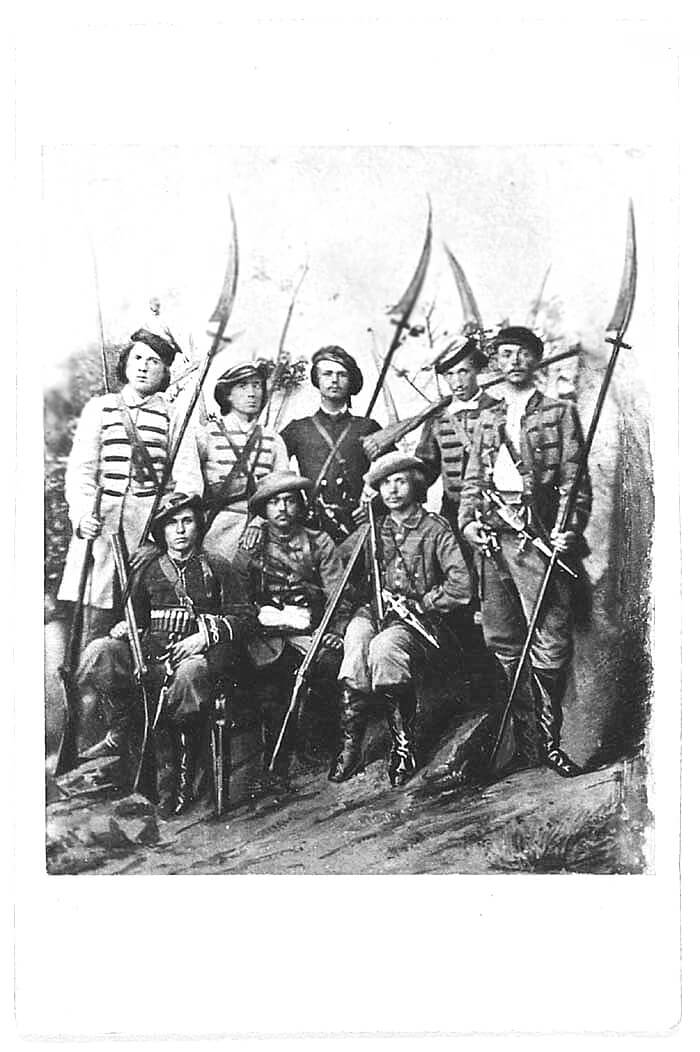
Belarusian national white-red-white flag on a house of National Secretariat of Belarusian People’s Republic, Minsk, 1918
During 1918, under the conditions of German occupation, the Council adopted a number of documents in which the Belarusian People’s Republic was proclaimed as an independent state (March 25, 1918).
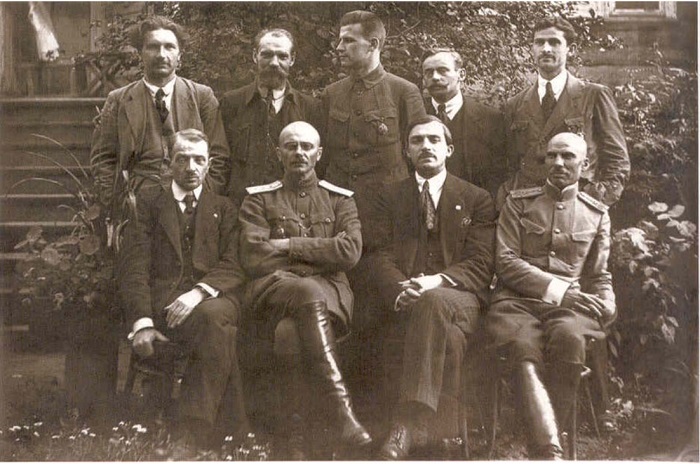
Government of Belarusian People’s Republic, Minsk, 1918
It is also important to note the special role of the activities of BPR activists in the process of restoring the role of the Belarusian language in socio-political activities of the city. The policy of assimilation of the Russian Empire caused serious damage to education, culture, and historical memory.
Over the years of the BPR’s activity, some Belarusian-language schools have been opened in Minsk, and a Belarusian-language gymnasium has started its functioning. In the autumn of 1918, the Minsk Belarusian Pedagogical Institute, higher educational institution, was established.
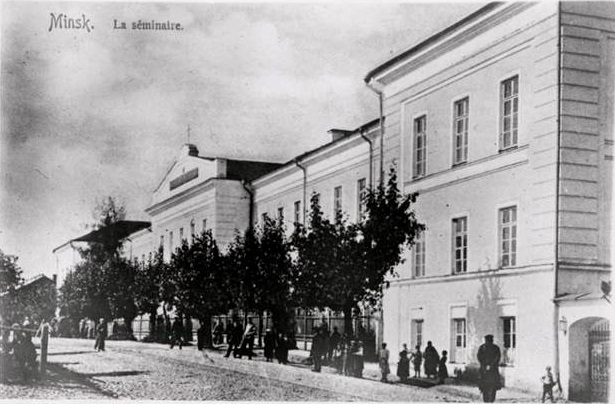
Belarusian Pedagogical Institute, Minsk, the beginning of the XX century
In addition, in the spring of 1918, the Minsk Higher Music School was organized, which a little later became the Belarusian Conservatory. In 1917, the First Association of Belarusian Drama and Comedy also began its work in Minsk, which became the Belarusian State Theater of the BPR a year later.
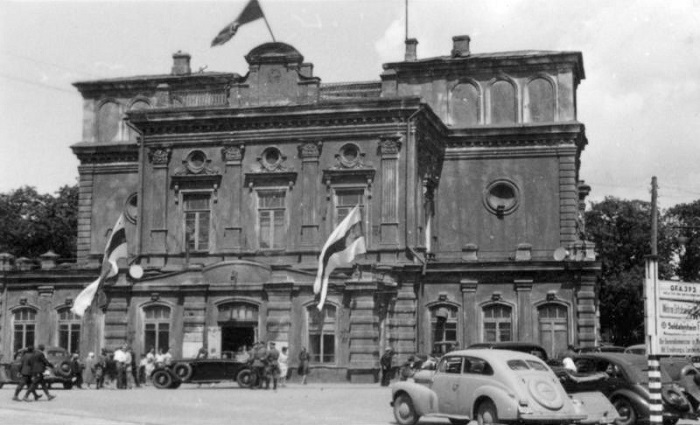
The Belarusian State Theater during the German occupation, Minsk, 1943
Thus, during the last years discussed in this article, the Belarusian national idea received a new impetus, and the existing conditions largely contributed to the development of socio-political and cultural activities.
References:
History of the 1863-1864 uprising in Belarus (overview) / State Archival Service of Belarus. — Mode of access: https://archives.gov.by/en/welcome-to-the-archives-of-belarus-website/subject-guides-to-archival-records/historical-events/archival-documents-and-materials/history-of-the-1863-1864-uprising-in-belarus-overview.
Michaluk, D. From the Grand Duchy of Lithuania to the Belarusian Democratic Republic: the Idea of Belarusian Statehood, 1915-1919 / The journal of Belarusian studies. — Mode of access: https://docs.google.com/viewer?url=http://belarusjournal.com/sites/default/files/MICHALUK%20PRE.pdf.
The History of the Statehood of Belarus / the BNR Rada. — Mode of access: http://www.radabnr.org/en/the-history-of-the-statehood-of-belarus/.
The Grand Duchy of Lithuania: Encyclopedia. Vol. 1 / Belarusian encyclopedia named after P. Broŭka. — Mode of access: http://history.org.ua/LiberUA/978-985-11-0393-1/978-985-11-0393-1.pdf.
The Grand Duchy of Lithuania: Encyclopedia. Vol. 2 / Belarusian encyclopedia named after P. Broŭka. — Mode of access: http://history.org.ua/LiberUA/978-985-11-0394-8/978-985-11-0394-8.pdf.
The Grand Duchy of Lithuania: Encyclopedia. Vol. 3 / Belarusian encyclopedia named after P. Broŭka. — Mode of access: http://history.org.ua/LiberUA/978-985-11-0487-7/978-985-11-0487-7.pdf.
Polatsk Principality / A brief history of Belarus for the last 1000 years. — Mode of access: http://history-belarus.by/pages/terms/polotsk_principality.php.

